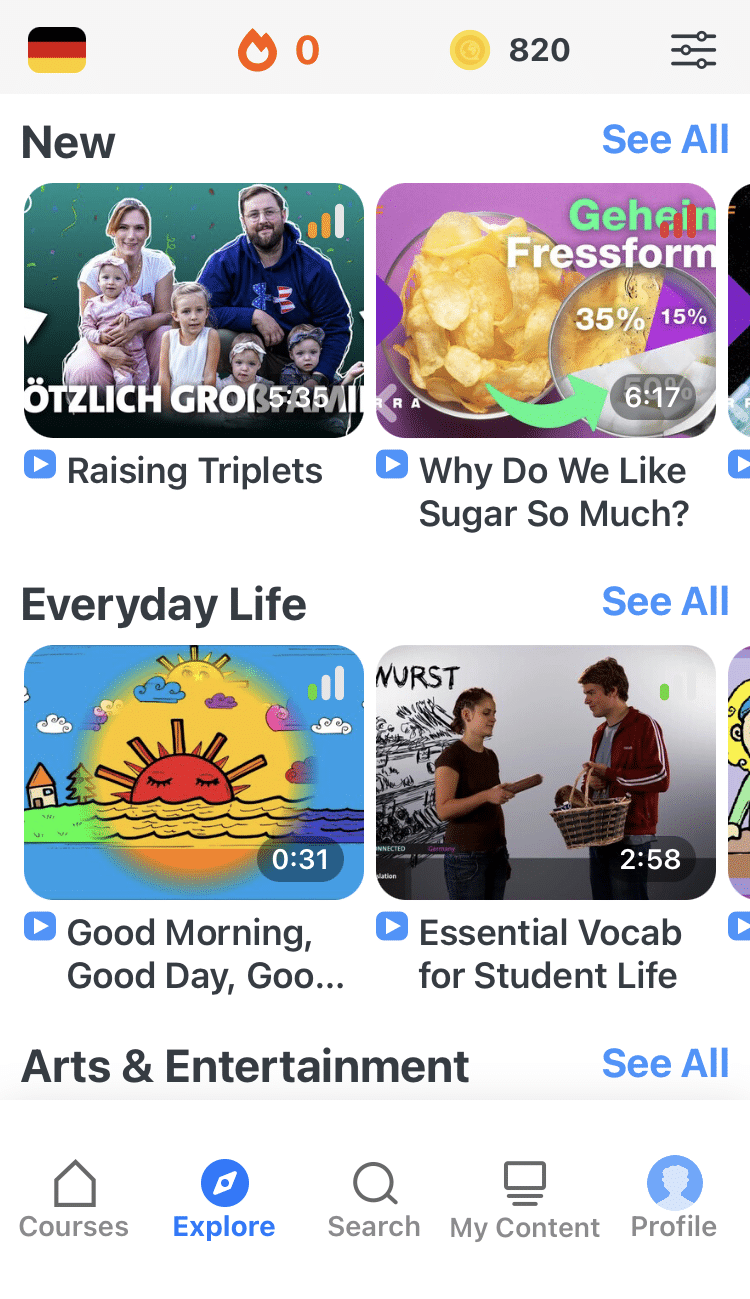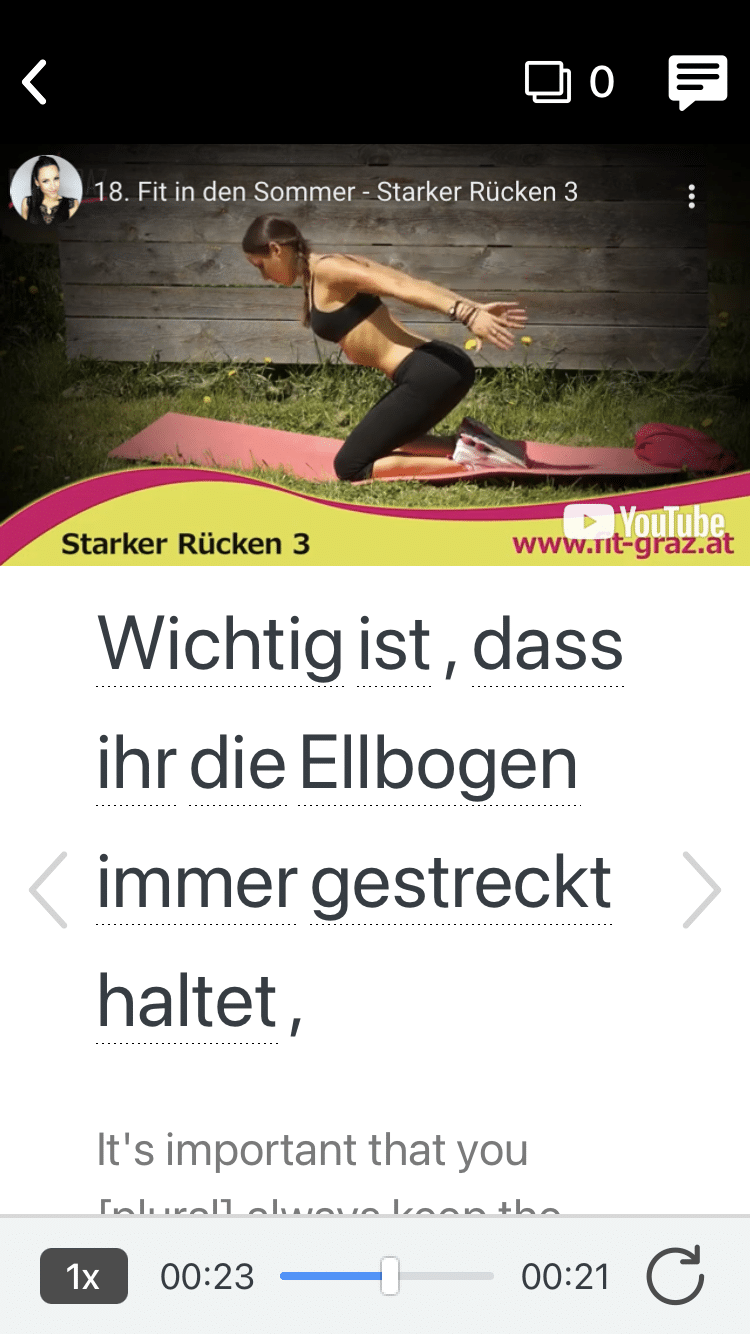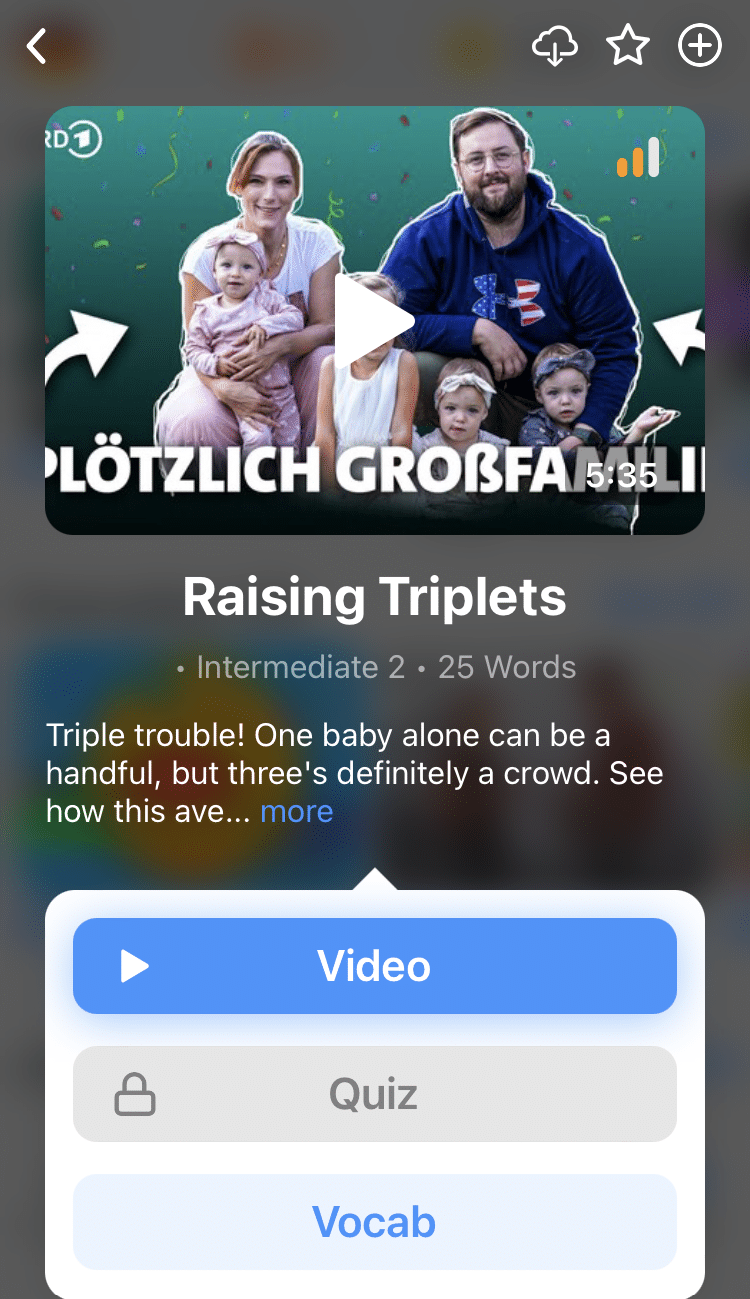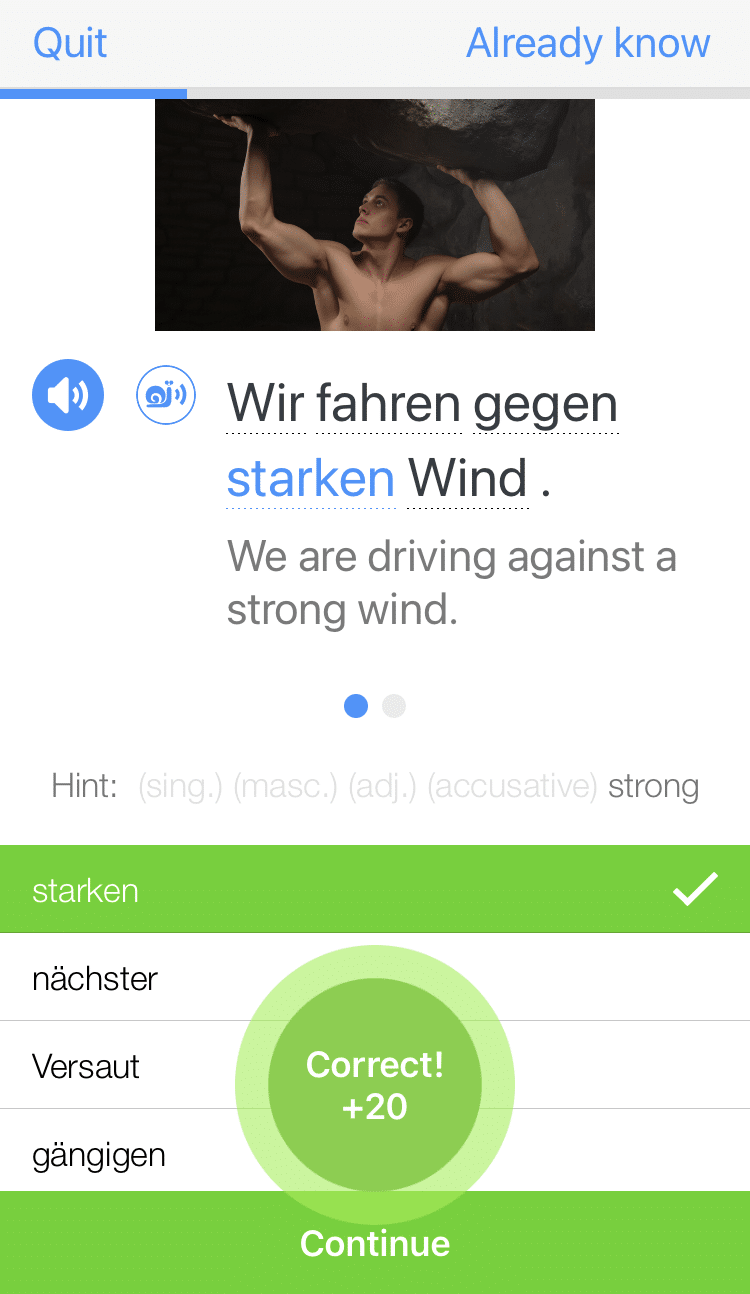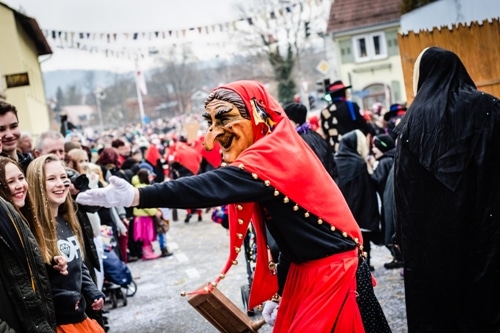
4 German Mardi Gras Traditions You Must Experience
In München, as much as in Rio, Venice and New Orleans, Carnival or Mardi Gras is a time for celebration, dancing, feeling free to be oneself (behind a mask) and participating in fabulous parades.
I grew up with the marvelous African drumming and dancing parades of Uruguayan carnival, and I generally associate carnival with music and traditions. Yet there is a quality of relaxing morality for a season that I have observed in every Mardi Gras celebration I have attended in the world.
Germany is not the exception. In fact, the German-speaking world boasts a wonderful variety of regional Mardi Gras celebrations and festivities.
Germans have been known to call carnival the fifth season for a reason. There is simply too much to experience.
If you are interested in joining the German Mardi Gras party this coming season, learning a bit about the traditions can greatly boost your enjoyment of the celebrations.
Download: This blog post is available as a convenient and portable PDF that you can take anywhere. Click here to get a copy. (Download)
Basic German Mardi Gras Glossary
- Aschermittwoch — Ash Wednesday, the day Lent begins, after the carnival.
- Fasching, Fastnacht, Karneval — Carnival has a different name in different regions. In regions that were settled by Romans, it’s called Karneval, while non-Roman areas have Fasching and Fastnacht. Fastnacht is also celebrated in Austria, German Switzerland and Luxembourg.
- Faschingsball — Carnival ball
- Die fünfte Jahreszeit — The fifth season
- Büttenrede — Carnival rhyming speech, usually referring to politics and current events with a touch of humor and irony
- Karnevalsumzug — Mardi Gras parade
- Narr — Fool, jester
- Narrenhästräger — Jester costume wearers
- Rosenmontag — Rose Monday
- Rosenmontagsumzug — Rose Monday parade
- Fastnachtsdienstag, Faschingsdienstag — Shrove Tuesday, Fat Tuesday, Mardi Gras
- Alaaf! — Carnival greeting in the Köln dialect.
- Helau! — Carnival greeting in Düsseldorf.
- Morgestraich — Basel’s nocturnal Fasnacht procession
- Fastelabend — The last Thursday before the beginning of Fastnacht, also known as Schmutziger Donnerstag (dirty Thursday).
- Schwarz-Weiß-Bälle — Black and white balls popular in München.
- Weiberfastnacht — Women’s carnival takes place on Fastelabend. It is a day for women to play pranks on men, for example, cutting off their ties.
Fastnacht, Karneval and Fasching
Different regions all over Germany and beyond have different carnival traditions, and they even call their Mardi Gras celebrations by different names. The Rhineland has its Karneval, Austria, Bavaria and Berlin have Fasching, and Southern Germany and Switzerland celebrate Fastnacht.
In Catholic tradition, carnival is a season of rich meals, partying and fun before the fast of Lenten (Lent) begins. In medieval times, Lenten was also a time for performing plays, called Fastnachtsspiele.
Earlier, pagan carnival celebrations in Germany symbolized the driving out of winter’s evil spirits, with the aid of masks to scare them away. Fastnacht comes directly from this tradition.
The Köln Karneval’s tradition of masked jesters criticizing politicians is directly connected to the French domination of the Rhineland after the French revolution, when that time of year was the only time Germans could safely mock the French leaders, hiding behind their masks.
Garman Mardi Gras Calendar 2016-2018
The carnival season is supposed to kick off on November 11, but there is seldom much going on before January, and February is the time of all the traditional parades.
2016
Main events — Feb. 7-9
Aschermittwoch — Feb. 10
Weiberfastnacht — Feb. 4
Rosenmontag — Feb. 8
2017
Main events — Feb. 26-28
Aschermittwoch — March 1
2018
Main events — Feb. 11-13
Aschermittwoch — Feb. 14
Note: In some parts of Switzerland, Fastnacht is celebrated after Lent has begun. For example, in Basel, the 2016 celebrations will span 72 hours, from 4:00 a.m. on Monday, February 15th until 4:00 a.m. on Thursday, February 18th.
4 German Mardi Gras Traditions You Must Experience
1. Bavarian Fasching — The München Parade
The main Fasching celebrations in München take place around Marienplatz square and Viktualienmarkt, but there are Faschingball parties and music all over town.
The highlight is the Sunday parade of the Damischen Ritter (Daft Knights). This Faschingsumzug is lead by Duke Kasimir and his retinue of knights, clowns, colorful floats and marching bands. It takes place along Herzog-Wilhelm-Straße with a spectacular after party at Hofbräuhaus around 2:30 p.m.
Insider’s tips: Partying in München takes place all over the pedestrian areas during the three days of the main Fasching celebrations, from Sunday till Tuesday. The Narren take over the streets and the city becomes one big party.
Make sure to bring black or white clothes to be able to attend one of the famous Schwarz-Weiß-Bälle, which require wearing either all white or all black.
Don’t forget to try the delicious Krapfen, München’s version of the doughnut.
Another interesting celebration, similar to the München parade, is the Sunday parade in Würzburg—it is the biggest in Bavaria!
2. Fastnacht — The Rottweil Parade
Known as the Narrensprung (Fool’s Leap), the Rottweil parade is the most traditional in all of Germany. There are, in fact, three different parades in Rottweil, one on Rosenmontag at 8:00 a.m. and two on Fastnachtsdienstag, at 8:00 a.m. and 2:00 p.m.
Parade participants wear wooden carved masks, an ancient Fastnacht tradition. During the 8 a.m. parade, 4,000 fools march towards the medieval Black Gate, where they dance to the popular Fool’s March tune, hop on one leg and cry out “Hu Hu Hu!”
There are seven different Fastnacht characters, each represented by a characteristic mask. The popular Federahannes character, a jester with large curved teeth in a goose feather costume, carries a pole with a perfumed calf’s tail, and he vaults through the cobblestones while dangling the tail in front of people, making faces and purring.
Insider’s tips: Masks and costumes are often handed down from generation to generation in Rottweil, so, if you get a hold of one of them, handle it with care. On Rosenmontag, a band of trumpet players awakens the city by marching through the streets at 5 a.m. If you are not inclined to wake that early, be mindful of where you are staying!
Basel’s Fastnacht is the biggest carnival celebration in all of Switzerland. Because it starts after the end of other carnival celebrations in the region, it can be a great option to prolong your German Mardi Gras experience. The Morgestraich nighttime parade with lanterns is particularly beautiful.
3. Karneval in Köln
Karneval is a time of masked balls and merry parades all over Köln.
The festivities kick off with Weiberfastnacht, one of the highlights. On that day, women go about their daily routines in fancy gowns, gathering at the Alter Markt, where the Prince, the Peasant and the Virgin, the main Karneval figures, officially open the celebrations. At 13:30, the historical play “Jan un Griet” is performed at Severinstor, and afterwards a procession with dance and music heads towards the Alter Markt.
Over the following days, there are masked balls, streets full of Jecken (Karneval figures), and numerous parties everywhere. To get in the mood, you can always start your day with a Frühschoppen (early morning drink) and head to the lively Neumarkt.
The Carnival Sunday parade takes over the city center from 10:30 p.m onward, but the most spectacular parade is the official Rosenmontag parade at 10:30 a.m. complete with Kamelle (candy), Strüßjer (bouquets of flowers), Bützje (pecks, little closed mouth kisses between strangers) and over one million elegantly dressed attendees.
On Karneval Tuesday, there are parades all over Köln’s suburbs, crowned by the burning of Nubbel (life-size straw figure). When Ash Wednesday finally arrives, it is time to soothe your hangover at a local pub with a traditional fish dinner.
Insider’s tips: There is great rivalry between Düsseldorf and Köln.
The Köln Karneval cry is “Alaaf,” while in Düsseldorf it is “Helau.” Try to not get them mixed up! If you are in Köln, do not forget to try the typical Kölsch beer. If you are not a fan of stranger pecks, stay clear of the parades altogether (or up your drink minimum!).
Other interesting Karneval celebrations
The biggest Karneval parade is the one in Köln, but Düsseldorf, Mainz, Trier and Koblenz have great street parties too.
4. Büttenreden
The Büttenrede is one of the most traditional art forms of German Mardi Gras. They are written specially for each year’s celebrations and performed during parades and shows all over Germany.
As a foreigner, understanding Büttenreden requires knowledge of German current affairs and an advanced command of the language.
- Origin — The Büttenrede is connected to the medieval custom of Rügerechts (right to criticize), which allowed commoners to criticize powerful men during Fastnacht without fear of retaliation.
- Style — A Büttenrede is a rhyming poem with a tight verse structure. It usually makes humorous or sarcastic comments about the flaws of politicians, government and socierty as a whole.
- Famous Büttenredner (Buttenrede artists) — Over the years, popular artists have written many unforgettable Büttenreden. The most celebrated Büttenredner include Maria Heinrich Hoster, Willibert Pauels, Dieter Brandt and Wolfgang Düringer, among many others.
As you can see, there is a Mardi Gras party for everyone in Germany and beyond.
You can opt for honoring traditions that date back to the Middle Ages, attending a fancy ball or just drinking beer with masked merrymakers starting in the early morning.
Germans know how to party, and on Mardi Gras they do it in style.
Bring out your mask, your jester’s pole, your Karneval cry and keep up the merrymaking till the straw man burns and the springtime starts to show its lovely face.
Download: This blog post is available as a convenient and portable PDF that you can take anywhere. Click here to get a copy. (Download)
And One More Thing...
Want to know the key to learning German effectively?
It's using the right content and tools, like FluentU has to offer! Browse hundreds of videos, take endless quizzes and master the German language faster than you've ever imagine!
Watching a fun video, but having trouble understanding it? FluentU brings native videos within reach with interactive subtitles.
You can tap on any word to look it up instantly. Every definition has examples that have been written to help you understand how the word is used. If you see an interesting word you don't know, you can add it to a vocabulary list.
And FluentU isn't just for watching videos. It's a complete platform for learning. It's designed to effectively teach you all the vocabulary from any video. Swipe left or right to see more examples of the word you're on.
The best part is that FluentU keeps track of the vocabulary that you're learning, and gives you extra practice with difficult words. It'll even remind you when it’s time to review what you’ve learned.
Start using the FluentU website on your computer or tablet or, better yet, download the FluentU app from the iTunes or Google Play store. Click here to take advantage of our current sale! (Expires at the end of this month.)
